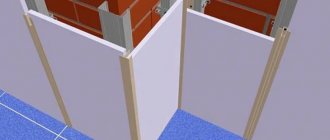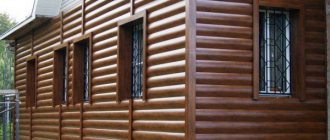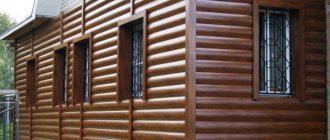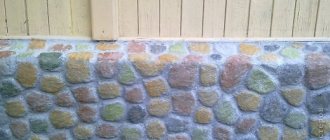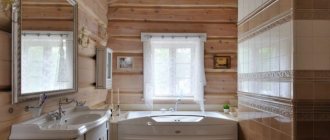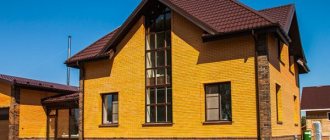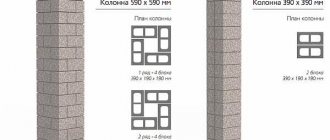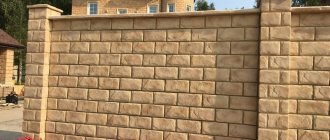Soft wall upholstery has a very long history - it is generally one of the oldest methods of interior decoration of “rich” rooms. And after a certain period of “oblivion”, such technology seems to be reborn. The fact is that soft wall panels have recently been actively used again for cladding individual areas or even the entire surface of walls.
Soft wall panels
They become especially relevant in multi-storey panel buildings, where there is “no” sound insulation, which very often interferes with the normal rest of the residents. Therefore, in some cases, such products are mounted not only on the walls, but also on the ceiling of rooms - they even dampen impact noise quite well. In addition to the practical side of the issue, the panels also become an excellent decorative element of the interior, especially since their range is so diverse that there is a finish for every taste.
Advantages of wall panels for the bedroom
- Easy to install as they are sold in ready-made pieces.
- They do not require preliminary thorough and deep treatment of the walls.
- Can be mounted on uneven surfaces.
- Hides defects, electrical wires and other communications.
- They have good sound and heat insulation qualities.
- Durable.
- Pleasant to the touch.
Another important advantage is that panels are often sold as separate elements, rather than as a single monolithic surface. Using small fragments, like a construction set, you can assemble decor of any size and shape.
This is especially valuable in small, narrow or simply non-standard bedrooms. The possibility of variable assembly will also be appreciated by owners of massive furniture, which must be played with, taking into account its presence.
Types of soft decorative coverings
The material used for upholstery is:
- 1) Textiles are a popular upholstery. It has a wide range of colors and various designs and patterns. For finishing it uses viscose, linen, silk, velor, suede, etc. They have a low price.
- 2) Leather and faux leather are a popular choice of finishes. They are durable and easy to use. Wide selection of colors, textures and rhinestone decoration options. They are most successfully combined with a calm tone of wallpaper or paint.
Fabric upholstery is not as durable as leather or leatherette upholstery.
Cons of wall panels
- Soft volumetric panels are more expensive than traditional wallpaper and wall paints.
- Not suitable for rooms with high humidity.
- Over time, dust and odors accumulate and require deep professional cleaning.
- It is impossible to hang something bulky (shelf, TV) on the wall if you do not first provide for fastenings, even before installing the panels.
Recommendations for use
There are three main options for using soft walls in the interior.
- Very often, soft walls are installed in children's playrooms to protect children from possible injuries when colliding with a wall. For these purposes, not the entire wall is sheathed with soft panels, but only its lower part. It is quite natural that in this case bright colors are used. The environmental friendliness and safety of such materials meets all standards.
USEFUL INFORMATION: How to calculate the area of walls and floors
- The second use case is to highlight a specific zone in the interior. For example, in the bedroom above the head of the bed. The color design of soft walls should be harmoniously combined with the rest of the decoration and furniture in the room. This design technique will bring a feeling of softness, warmth and sophistication to the room.
- Use as a complete wall finish. In this case, you should carefully select the texture and color of the soft panels, as well as the design, so as not to end up with a pressing effect.
Care should be taken when choosing soft finishes for small rooms and rooms with low ceilings. An illiterate design decision can visually reduce the space.
What are soft wall panels made of?
The basic composition of any wall panels is a solid base, soft filler and upholstery material.
Plywood, chipboard or fiberboard sheets, and PVC are used as the base.
The softness and plumpness of the panels is given by polyurethane foam (better known as foam rubber) or padding polyester. With foam rubber they will be more voluminous and thicker, but over time the filler may fall down a little under its own weight. Sintepon makes the panels lighter; it is preferable in models with a screed.
Upholstery material is the most variable component. There are three principle groups:
- Genuine Leather;
- Leatherettes;
- Textile.
No. 6. The best manufacturers
Soft wall panels are popular in different countries of the world where they have their own production facilities. In Russia, the products of foreign enterprises are poorly represented, since the cost of panels due to transportation increases significantly. There are well-equipped production facilities in different parts of the country that also produce custom panels. We will focus on the largest and most proven ones.
MolleMebel
This company specializes in the manufacture of beds, but is gradually expanding production with related products. The company is equipped with modern European equipment, which produces different types of wall panels: fabric, leather, eco-leather and Alcantara. There are a lot of design options; there is a separate series of panels for cinema halls and clubs.
"House of Walls"
The company produces furniture, leather furniture facades and soft wall panels. The manufacturer is proud of the high quality of its products and its individual design, using the highest quality and safest raw materials. The company offers the creation of panels according to the customer's design and assistance in developing sketches. Leather, suede, Alcantara, fabric, as well as fibers with specific properties: non-flammable, antibacterial, odor-eliminating, can be used as facing materials for panels. The range also includes 3D panels.
"MOLIZE"
The leading domestic company for the production of designer furniture, MOLIZE, has recently mastered the process of manufacturing soft wall panels, and now this direction has become the main activity of the company. Consistently high quality of products is ensured by cooperation with the best manufacturers of leather, fabric and accessories, training of company employees at European enterprises and constant quality control. The panels are made with upholstery made of leather, fabric and leatherette; custom orders are possible.
"MK Stroy"
This company is based in Yekaterinburg and produces soft wall panels simultaneously with the manufacture of furniture. The range includes options made of leather, eco-leather and fabric; it is possible to manufacture panels according to customer requirements for size and color.
LLC "Miagky Sign"
This Perm company, among other products, also produces soft wall panels under the Soft Sign brand. Foam rubber and synthetic padding are used as filler; the upholstery is made of flock, velor, jacquard, tapestry and other furniture fabrics, genuine leather and leather substitutes. The company offers both ready-made options with a unique design and the development of panels according to its own ideas.
Knerzer Group LLC
The company produces children's furniture and soft wall panels, offering a wide selection of ready-made options with upholstery made of leather, leatherette and fabric. At the customer's request, panels of any size (from 5 cm) and design are manufactured.
"Parquet Avenue"
The company was opened 12 years ago and initially specialized in the production of floor coverings. Today, the manufacturer’s range has expanded significantly, and soft wall panels have become almost the main area of activity. The manufacturer focuses on the production of panels with leather upholstery.
Finish options
Obviously, genuine leather (and suede) trim is the most expensive option. By its very presence it adds luxury to any room, but it also requires an appropriate setting. Furniture made of natural wood, plain or multi-colored embossed wallpaper will harmoniously combine with leather panels.
Faux leather is a more budget option for a respectable bedroom. Modern artificial materials are in no way inferior to their natural ancestor. They look decent, do not accumulate dust, and can even be wet cleaned.
Fabric upholstery is the most common. In addition to a wide variety of colors and patterns, textiles allow the use of various tie techniques. The most popular of them - carriage - resembles plump diamonds with decorative buttons or studs in the corners.
It is fabric panels that are considered the most comfortable and suitable for the atmosphere of the bedroom. The effect is enhanced by materials that are pleasant to the touch and look, such as:
- Velours;
- Velvet;
- Atlas;
- Silk;
- Tapestry.
Ensembles where the upholstery of panels, bed frames, blankets, decorative pillows or other elements are made of the same fabric look great.
No. 5. Size and forming method
The sizes of soft wall panels vary widely. These can be small soft tiles measuring 10*10 cm and huge panels 1.5*2.7 m. The shape is usually a square, rhombus or rectangle. Sometimes large panels that occupy the entire wall are replaced by installing two slats at the bottom and top, the space between which is filled with synthetic padding, and then a fabric sheet is pulled over the structure, but this option does not quite fit the description of soft wall panels.
If small elements, as a rule, are made smooth, then large panels are often made using capitonne, or carriage screed . Its essence is to embed large decorative buttons in the material in a certain sequence. Such decorations are often used in the manufacture of furniture, and previously they were used to decorate aristocratic interiors.
Buttons are usually staggered, forming squares or diamonds. In addition, buttons can be used to form an entire design (company logo, family coat of arms, etc.), thereby giving an interesting look to the room. The carriage screed looks better on plain materials, especially on leather, velor, velvet, suede, and artificial leather. Capitonnes are often used for small panels, whose main advantage is the ease of replacing damaged elements.
The size of soft wall panels is selected depending on your own design ideas and room parameters. If to decorate an entire wall in a room it will be more convenient to work with large panels, then to decorate only a small area it will be more appropriate to use small panels. By the way, the elements can be of completely different shapes, assembled on the wall like a kind of puzzle.
Although the soft wall panels themselves are voluminous, the so-called 3D panels stand out separately. They are made on the basis of MDF panels, gypsum or solid wood, which are given a certain shape, and then they are either painted or covered with leather or textiles. The latter option is often classified as soft wall panels, but due to the absence of a layer of synthetic padding polyester or foam rubber, they cannot be considered as such.
How panels are attached to walls
Several mounting options are used, but in any case, the work begins with careful measurements and markings of the wall.
Fundamentally different ways:
- Glue;
- Frame;
- Fastening elements.
The first group combines PVA glue, modern “liquid nails,” and double-sided tape. Panels with a self-adhesive back side are available for sale. PVA is applied to the entire surface of the panel, and construction acrylic adhesive is enough to be applied dotted or in zigzags.
- The frame method is essentially assembling a soft panel directly on the wall. To begin with, a frame is assembled from wooden slats over the entire surface.
- The slats are fixed with dowels. Then soft filler is glued between the slats.
- The final stage is covering with fabric. The fabric is fixed on the longitudinal and transverse slats with decorative nails.
- You can use a simple furniture stapler with staples, and then seal them with a beautiful braid that matches the fabric.
Solid large panels are difficult to glue, so they are hung by drilling holes in the base. Screws are firmly fixed to the wall and a soft panel is hung on them.
Recently, a magnetic fastening method has also appeared. If the manufacturer has equipped the panels with a sufficient number of magnets, then you can attach a metal plate to the wall and the base of the panel will “stick” to it perfectly.
Fabric stretching
The technology for decorating walls with fabric is quite simple. You will need:
- wooden slats;
- dowels and screws;
- construction level (hydraulic level);
- nails and hammer;
- tape measure, pencil;
- screwdriver
A free space is created between the wall and the stretched textile, equal to the height of the used slats. If necessary, insulation or soundproofing material can be placed in this air pocket. To fix the material, special glue is used, and the joints are carefully sealed so that it does not leak onto the fabric.
When choosing a material, the properties of textiles are taken into account - for light ones, choose insulation of the same color, dark ones will be transparent.
Progress
Along the entire perimeter of the room, lines for installing the slats are drawn using a pencil, tape measure and a building level. The lines must be located at the same height from the floor and ceiling, while the distance between them must also be maintained so that the attached fabric is stretched evenly and there are no distortions.
Using dowels and self-tapping screws, wooden slats are secured to the marked line.
For further actions you will need two pairs of hands. The fabric must be pulled evenly and tightly enough. In places where it is attached to the slats, it is folded twice to prevent tears. They are nailed using small nails; a piece of leather is first placed under each nail. Another possible method of fixation is with furniture brackets.
At the final stage, the places where the textiles are attached to the slats are covered with plinths or decorative strips.
DIY wall panels in the bedroom (step by step instructions)
It will not be difficult for a craftsman who is familiar with the main types of furniture work and tools to make soft panels on his own. All materials are available both at specialized wholesale stores and in retail sales.
The general sequence of actions is as follows.
- Develop a sketch of products. Calculate their size, shape, quantity.
- According to the calculated values, cut a sheet of chipboard (or other material) and cut the seal into the same pieces (without indents or allowances).
- The fabric is cut taking into account the thickness of the panel and the fold on the reverse side. It is fixed first on two opposite sides, then on the rest with a furniture stapler. Be sure to pull the fabric tightly and evenly. The process is similar to upholstering the seat of a stool or chair.
Advice! If you plan to stitch the panels, then the holes for the threads that secure the buttons must be drilled in the base in advance.
The buttons are secured with strong acrylic thread and secured at the back with the same furniture stapler. It is better to place several staples in different directions. It is also important to maintain good tension.
The undeniable advantages of making soft panels yourself:
- At any time, you can change the design idea for the bedroom, add or reduce the number of elements, take a different fabric;
- Non-standard elements (usually narrow pieces or halves in the corners of the room) are made just as quickly as standard ones; no need to specially order them and wait;
- Independent selection of materials gives confidence in their quality and environmental safety;
- Having leftover plywood or fiberboard, padding polyester from other works, you can save a lot;
- There is no chance of paying and receiving a product of the wrong quality or configuration due to a manager’s mistake.
One should not remain silent about the fact that repairs made by oneself always bring more satisfaction than those ordered and paid for by craftsmen.
Conclusion
Now in stores, ready-made soft wall panels cost from 5,000 rubles per 1 m², but you received instructions according to which you can do everything yourself and several times cheaper. If after watching the video you still have questions, welcome to the comments, I will help in any way I can.
